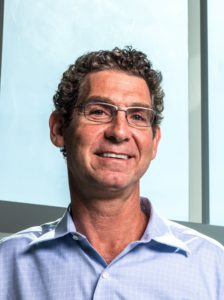 Inspired by true events surrounding an historic Florida citrus season and the civil rights struggle, Andrew Furman’s GOLDENS ARE HERE offers a glimpse of the sea changes occurring in Florida and the nation in the 1960s through the prism of one family’s negotiations with the land, their neighbors, and each other. Leading up to his reading and book signing Feb. 6, we had the opportunity to chat with him about his background and new book.
Inspired by true events surrounding an historic Florida citrus season and the civil rights struggle, Andrew Furman’s GOLDENS ARE HERE offers a glimpse of the sea changes occurring in Florida and the nation in the 1960s through the prism of one family’s negotiations with the land, their neighbors, and each other. Leading up to his reading and book signing Feb. 6, we had the opportunity to chat with him about his background and new book.
Q: Please tell us a little about how you came to write GOLDENS ARE HERE?
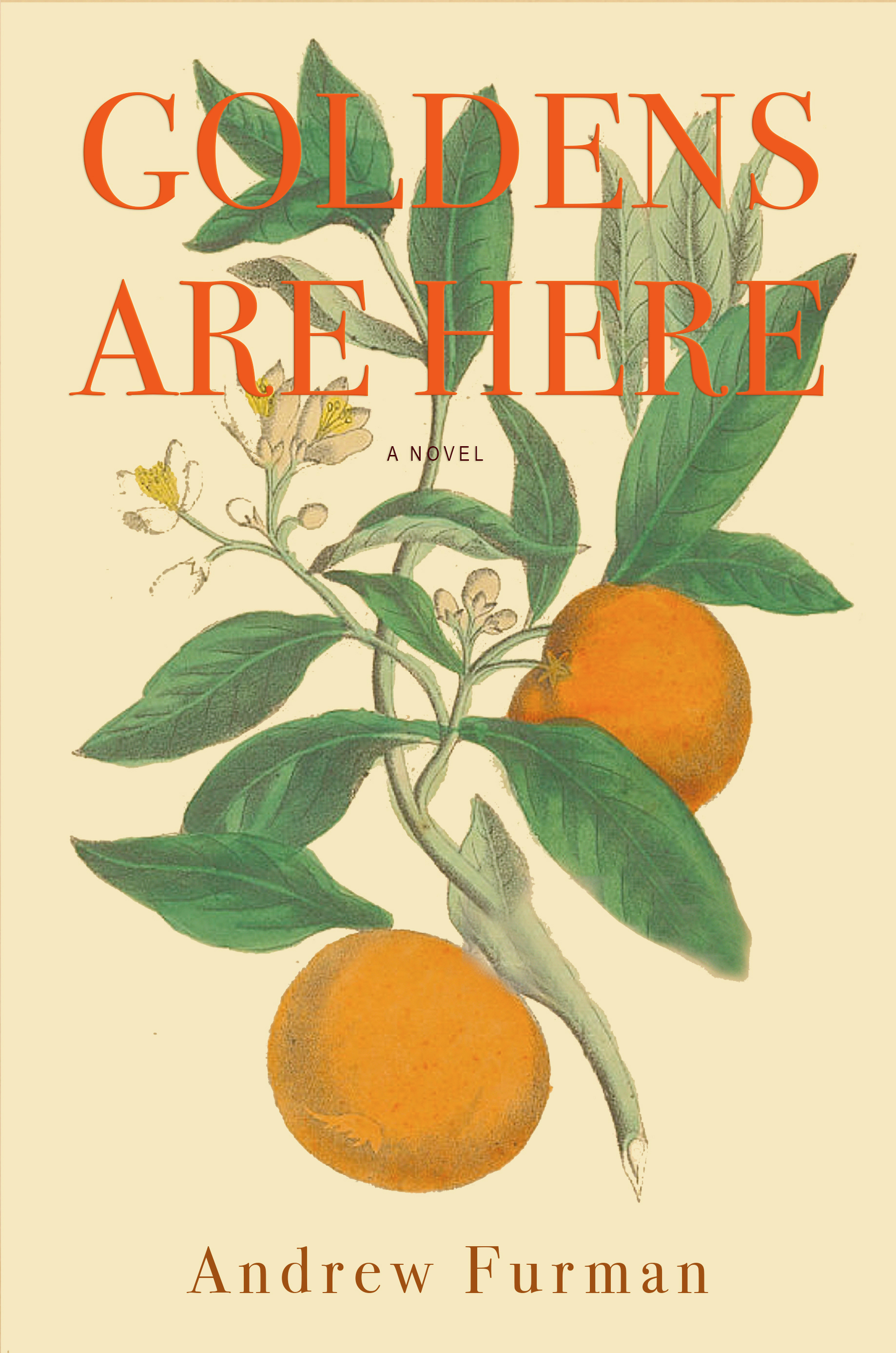 A: I’ve lived here in south Florida for the past 22 years and one of my favorite things to do is hop in the car with my family and visit some of the more scruffy out-of-the-way outposts of our Sunshine State. The seeds for GOLDENS ARE HERE, if I might use a botanical metaphor, originated in one of these trips with my family to the small town of Titusville and its rural outskirts. As I walked the streets of this historic town and visited the remaining orange groves along the nearby Indian River, I found myself imagining what the place must have looked like and meant to the people who lived there in what might be considered the region’s hey-day, the 1960s when the space-race was hitting its stride, the citrus industry was booming, and, as my research would uncover, the Civil Rights struggle was impacting black and white lives in significant ways. It seemed like a rich time and place to direct my creative energies. It wasn’t too long before a cast of characters and a story emerged in my mind that would allow me to engage with the intersections between the social and environmental realms, which has long been a primary interest of mine.
A: I’ve lived here in south Florida for the past 22 years and one of my favorite things to do is hop in the car with my family and visit some of the more scruffy out-of-the-way outposts of our Sunshine State. The seeds for GOLDENS ARE HERE, if I might use a botanical metaphor, originated in one of these trips with my family to the small town of Titusville and its rural outskirts. As I walked the streets of this historic town and visited the remaining orange groves along the nearby Indian River, I found myself imagining what the place must have looked like and meant to the people who lived there in what might be considered the region’s hey-day, the 1960s when the space-race was hitting its stride, the citrus industry was booming, and, as my research would uncover, the Civil Rights struggle was impacting black and white lives in significant ways. It seemed like a rich time and place to direct my creative energies. It wasn’t too long before a cast of characters and a story emerged in my mind that would allow me to engage with the intersections between the social and environmental realms, which has long been a primary interest of mine.
Q: You’ve also written a memoir about Florida? Can you say a little about how you decide to cast a subject as fiction or nonfiction and how you think readers respond to those narrative choices?
A: This is an excellent question that preoccupies much of my attention these days. In fact, I’m currently teaching a graduate writing workshop at Florida Atlantic University entitled, Writing Across Genres, which examines the work of writers (e.g., Colson Whitehead, Marilynne Robinson, Jesmyn Ward) who write both nonfiction and fiction. The aim, ultimately, is for my students to contemplate their own choices, vis a vis genre, more deliberately. Most of my writing—both nonfiction and fiction, and as my answer above suggests—originates in place. From there, I might choose the essay form if I feel that my own personal experiences in and of a particular place stands the chance of resonating with readers in a powerful way, and/or the real-life experience of another person associated with that place demands attention, or if some feature of the place (an animal or plant, say) intrigues me so much that I’m compelled to research and reflect upon this feature in earnest. BITTEN, my recent memoir, documents my experiences coming to know various fascinating aspects of my adopted home state.
I think I turn to fiction when there’s something about a place that inspires me to imagine an entire story and set of characters outside my own personal experiences, when to imagine a place as fully as I desire, I require the freedom of the “make believe” realm. As I review this response, I realize that I’ve positioned fiction, perhaps, as the more “creative” genre. I resist this notion, in theory, as I believe that the essay form can be every bit as creative as fiction, and as some of my most creative work, certainly from an aesthetic point of view, exists within the pages of my essays. But there we are.
In terms of how readers respond to these narrative choices, this is an even tougher question. But if I understand the question correctly, and given all the scandals in the realm of nonfiction lately (James Frey, Margaret B. Jones, et. al.), I will say that I believe that writers enter into a sort of contract with their readers when they purport to write nonfiction, that writers implicitly promise to be telling the truth (not to be inventing characters or events out of whole cloth, for example) and that readers have a right to be disappointed when writers are discovered to have violated these essential terms. In my creative nonfiction classes, my students and I spend a good bit of time brooding over the more nuanced terms of this contract.
Q: If you can boil it down, what’s the top piece you’d give aspiring writers?
A: This one’s easy. Don’t give up! That is, if you love the writing part of writing, keep at it and don’t be discouraged by the obstacles that come your way as you seek publication. I find that many aspiring writers simply don’t realize how many false starts, how many drafts, how many rejections by agents and editors, how many years, in short, go into a typical book. Perseverance pays.
Q: What are you reading and recommending currently?
A: The best novel I read recently is Richard Powers’ THE OVERSTORY, in which several interconnected characters and plot-lines beautifully evoke the long and tangled relationship between trees and us. On the nonfiction front, I was fascinated and moved by Sy Montgomery’s THE SOUL OF AN OCTOPUS, which forced me to look at octopuses (not “octopi,” I learned) in an entirely new light, and to rethink my alimentary choices at Greek restaurants and sushi bars!
Finally, upon learning of Mary Oliver’s recent passing (who was living just up the coast in Hobe Sound), I’ve been re-reading many of the poems I’ve so admired over her long career and reading some of her newer work in DEVOTIONS, a fairly comprehensive recent anthology of her poetry.
Q: What are you working on next?
A: Funny that you ask. I’m delighted to report that I’m currently working on a novel manuscript and a related collection of stories set in the Florida Keys! While I don’t like to talk too much about my current projects, I will say that I was inspired by my several bird-watching visits to the Dagny Johnson Key Largo Hammock Botanical State Park. As some of your readers surely know, this hammock and much of north Key Largo was slated for residential development in the 1970s and 80s, and some construction had ensued. Thanks in no small part to the tireless efforts of various environmental groups, including the Izaak Walton League, Friends of the Everglades, and the Upper Keys Citizens Association, led by Dagny Johnson, the land was finally acquired by Florida’s Conservation and Recreational Lands Program. The 2,421 acre park, which I encourage readers to visit, is now home to 84 protected species of plants and animals.
~ Robin Wood, Associate Manager
 Thursday, March 28, at 6pm, a reading and book signing with Joan Jacobs Brumberg, author of FASTING GIRLS & THE BODY PROJECT. Join us for a fascinating and timely discussion about women, girls, body image and social change.
Thursday, March 28, at 6pm, a reading and book signing with Joan Jacobs Brumberg, author of FASTING GIRLS & THE BODY PROJECT. Join us for a fascinating and timely discussion about women, girls, body image and social change.


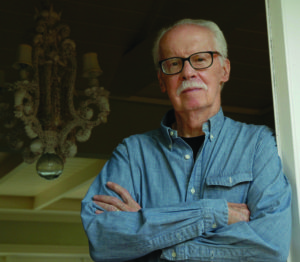


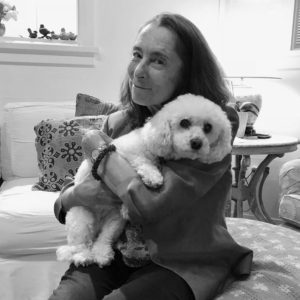 Tuesday, April 9, at 6pm, a book launch party and book signing with Ann Beattie, author of
Tuesday, April 9, at 6pm, a book launch party and book signing with Ann Beattie, author of  At a boarding school in New Hampshire, Ben joins the honor society led by Pierre LaVerdere, an enigmatic, brilliant, yet perverse teacher who instructs his students not only about how to reason, but how to prevaricate. As the years go by, LaVerdere’s covert and overt instruction lingers in his students’ lives as they seek some sense of purpose or meaning. Ben feels the pace of his life accelerating and views his intimate relationships as less and less fulfilling; there seems to be a subtext he’s not able to access. And what, really, did Bailey Academy teach him?
At a boarding school in New Hampshire, Ben joins the honor society led by Pierre LaVerdere, an enigmatic, brilliant, yet perverse teacher who instructs his students not only about how to reason, but how to prevaricate. As the years go by, LaVerdere’s covert and overt instruction lingers in his students’ lives as they seek some sense of purpose or meaning. Ben feels the pace of his life accelerating and views his intimate relationships as less and less fulfilling; there seems to be a subtext he’s not able to access. And what, really, did Bailey Academy teach him?
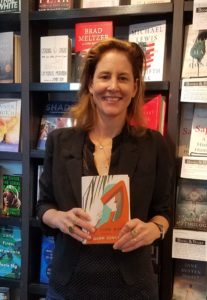 Hearing Susan Conley, author of
Hearing Susan Conley, author of 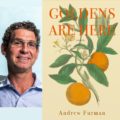
 Inspired by true events surrounding an historic Florida citrus season and the civil rights struggle, Andrew Furman’s GOLDENS ARE HERE offers a glimpse of the sea changes occurring in Florida and the nation in the 1960s through the prism of one family’s negotiations with the land, their neighbors, and each other. Leading up to his reading and book signing Feb. 6, we had the opportunity to chat with him about his background and new book.
Inspired by true events surrounding an historic Florida citrus season and the civil rights struggle, Andrew Furman’s GOLDENS ARE HERE offers a glimpse of the sea changes occurring in Florida and the nation in the 1960s through the prism of one family’s negotiations with the land, their neighbors, and each other. Leading up to his reading and book signing Feb. 6, we had the opportunity to chat with him about his background and new book. A: I’ve lived here in south Florida for the past 22 years and one of my favorite things to do is hop in the car with my family and visit some of the more scruffy out-of-the-way outposts of our Sunshine State. The seeds for GOLDENS ARE HERE, if I might use a botanical metaphor, originated in one of these trips with my family to the small town of Titusville and its rural outskirts. As I walked the streets of this historic town and visited the remaining orange groves along the nearby Indian River, I found myself imagining what the place must have looked like and meant to the people who lived there in what might be considered the region’s hey-day, the 1960s when the space-race was hitting its stride, the citrus industry was booming, and, as my research would uncover, the Civil Rights struggle was impacting black and white lives in significant ways. It seemed like a rich time and place to direct my creative energies. It wasn’t too long before a cast of characters and a story emerged in my mind that would allow me to engage with the intersections between the social and environmental realms, which has long been a primary interest of mine.
A: I’ve lived here in south Florida for the past 22 years and one of my favorite things to do is hop in the car with my family and visit some of the more scruffy out-of-the-way outposts of our Sunshine State. The seeds for GOLDENS ARE HERE, if I might use a botanical metaphor, originated in one of these trips with my family to the small town of Titusville and its rural outskirts. As I walked the streets of this historic town and visited the remaining orange groves along the nearby Indian River, I found myself imagining what the place must have looked like and meant to the people who lived there in what might be considered the region’s hey-day, the 1960s when the space-race was hitting its stride, the citrus industry was booming, and, as my research would uncover, the Civil Rights struggle was impacting black and white lives in significant ways. It seemed like a rich time and place to direct my creative energies. It wasn’t too long before a cast of characters and a story emerged in my mind that would allow me to engage with the intersections between the social and environmental realms, which has long been a primary interest of mine.

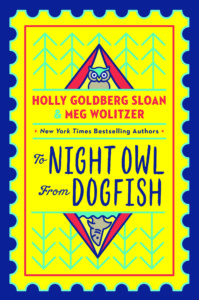 Q: How did you and Meg Wolitzer come to write this novel together?
Q: How did you and Meg Wolitzer come to write this novel together?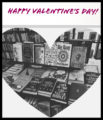
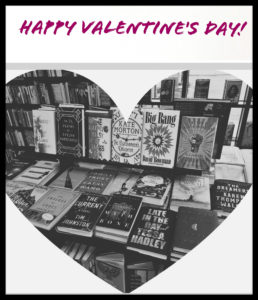 Happy Valentine’s Day!
Happy Valentine’s Day!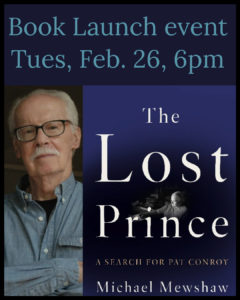
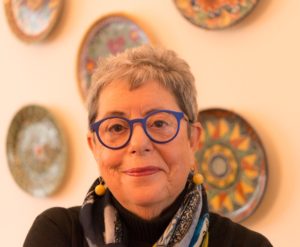 Thursday, March 28, at 6pm, a reading and book signing with Joan Jacobs Brumberg, author of FASTING GIRLS & THE BODY PROJECT. Join us for a fascinating and timely discussion about women, girls, body image and social change.
Thursday, March 28, at 6pm, a reading and book signing with Joan Jacobs Brumberg, author of FASTING GIRLS & THE BODY PROJECT. Join us for a fascinating and timely discussion about women, girls, body image and social change. Winner of four major awards, the updated edition of Joan Jacobs Brumberg’s FASTING GIRLS, presents a history of women’s food-refusal dating back as far as the sixteenth century. Here is a tableau of female self-denial: medieval martyrs who used starvation to demonstrate religious devotion, “wonders of science” whose families capitalized on their ability to survive on flower petals and air, silent screen stars whose strict “slimming” regimens inspired a generation. Here, too, is a fascinating look at how the cultural ramifications of the Industrial Revolution produced a disorder that continues to render privileged young women helpless. Incisive, compassionate, illuminating, FASTING GIRLS offers real understanding to victims and their families, clinicians, and all women who are interested in the origins and future of this complex, modern and characteristically female disease.
Winner of four major awards, the updated edition of Joan Jacobs Brumberg’s FASTING GIRLS, presents a history of women’s food-refusal dating back as far as the sixteenth century. Here is a tableau of female self-denial: medieval martyrs who used starvation to demonstrate religious devotion, “wonders of science” whose families capitalized on their ability to survive on flower petals and air, silent screen stars whose strict “slimming” regimens inspired a generation. Here, too, is a fascinating look at how the cultural ramifications of the Industrial Revolution produced a disorder that continues to render privileged young women helpless. Incisive, compassionate, illuminating, FASTING GIRLS offers real understanding to victims and their families, clinicians, and all women who are interested in the origins and future of this complex, modern and characteristically female disease.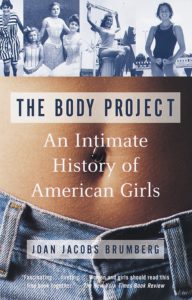 A hundred years ago, women were lacing themselves into corsets and teaching their daughters to do the same. The ideal of the day, however, was inner beauty: a focus on good deeds and a pure heart. Today American women have more social choices and personal freedom than ever before. But fifty-three percent of our girls are dissatisfied with their bodies by the age of thirteen, and many begin a pattern of weight obsession and dieting as early as eight or nine. Why?
A hundred years ago, women were lacing themselves into corsets and teaching their daughters to do the same. The ideal of the day, however, was inner beauty: a focus on good deeds and a pure heart. Today American women have more social choices and personal freedom than ever before. But fifty-three percent of our girls are dissatisfied with their bodies by the age of thirteen, and many begin a pattern of weight obsession and dieting as early as eight or nine. Why?
 Michelle C. Johnson will read from her book SKILL IN ACTION: RADICALIZING YOUR YOGA PRACTICE TO CREATE A JUST WORLD on Friday, February 8, at 6pm. We had the opportunity recently to ask Michelle a few questions to give you an idea of the concepts she will discuss during her presentation.
Michelle C. Johnson will read from her book SKILL IN ACTION: RADICALIZING YOUR YOGA PRACTICE TO CREATE A JUST WORLD on Friday, February 8, at 6pm. We had the opportunity recently to ask Michelle a few questions to give you an idea of the concepts she will discuss during her presentation.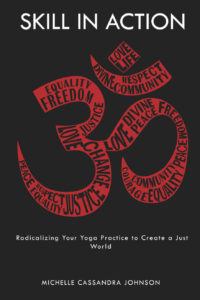 Q: How did you come to this combined practice of yoga and social justice work?
Q: How did you come to this combined practice of yoga and social justice work?
 In GOLDENS ARE HERE, Andrew Furman imagines with great empathy the individual members of the Golden family, their unique struggles and dreams, during a single tumultuous citrus season. Isaac Golden must reckon between his ambition to create the perfect fruit and the business realities bearing down upon him given the booming postwar demand for cheap frozen concentrate. His beautiful wife, Melody, finds herself testing the boundaries that had so clearly governed her more conventional life in suburban Philadelphia, and their chronically ill son, Eli, wishes only to muster his strength so that he might enjoy the wide-open outdoors and see a bobcat.
In GOLDENS ARE HERE, Andrew Furman imagines with great empathy the individual members of the Golden family, their unique struggles and dreams, during a single tumultuous citrus season. Isaac Golden must reckon between his ambition to create the perfect fruit and the business realities bearing down upon him given the booming postwar demand for cheap frozen concentrate. His beautiful wife, Melody, finds herself testing the boundaries that had so clearly governed her more conventional life in suburban Philadelphia, and their chronically ill son, Eli, wishes only to muster his strength so that he might enjoy the wide-open outdoors and see a bobcat.